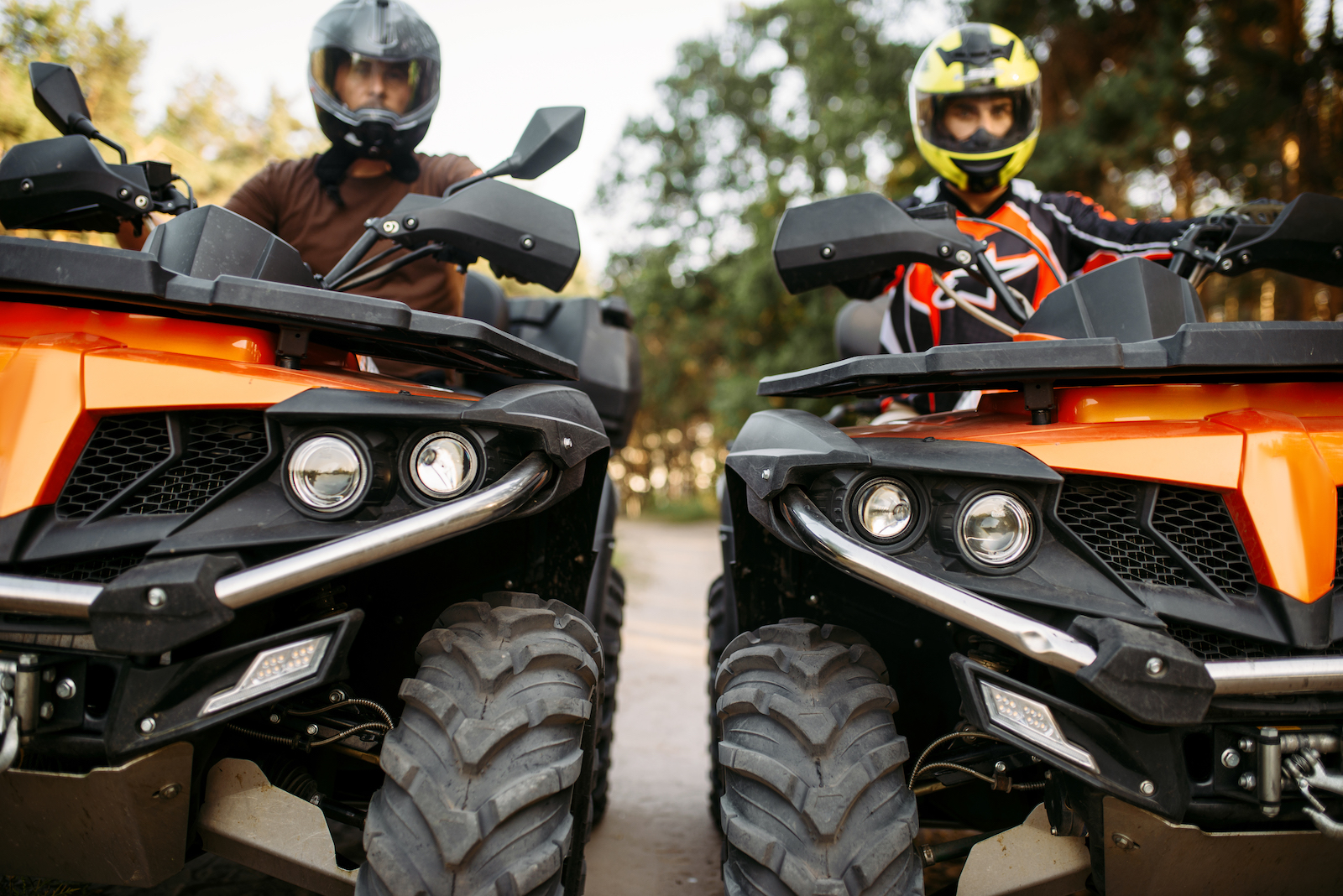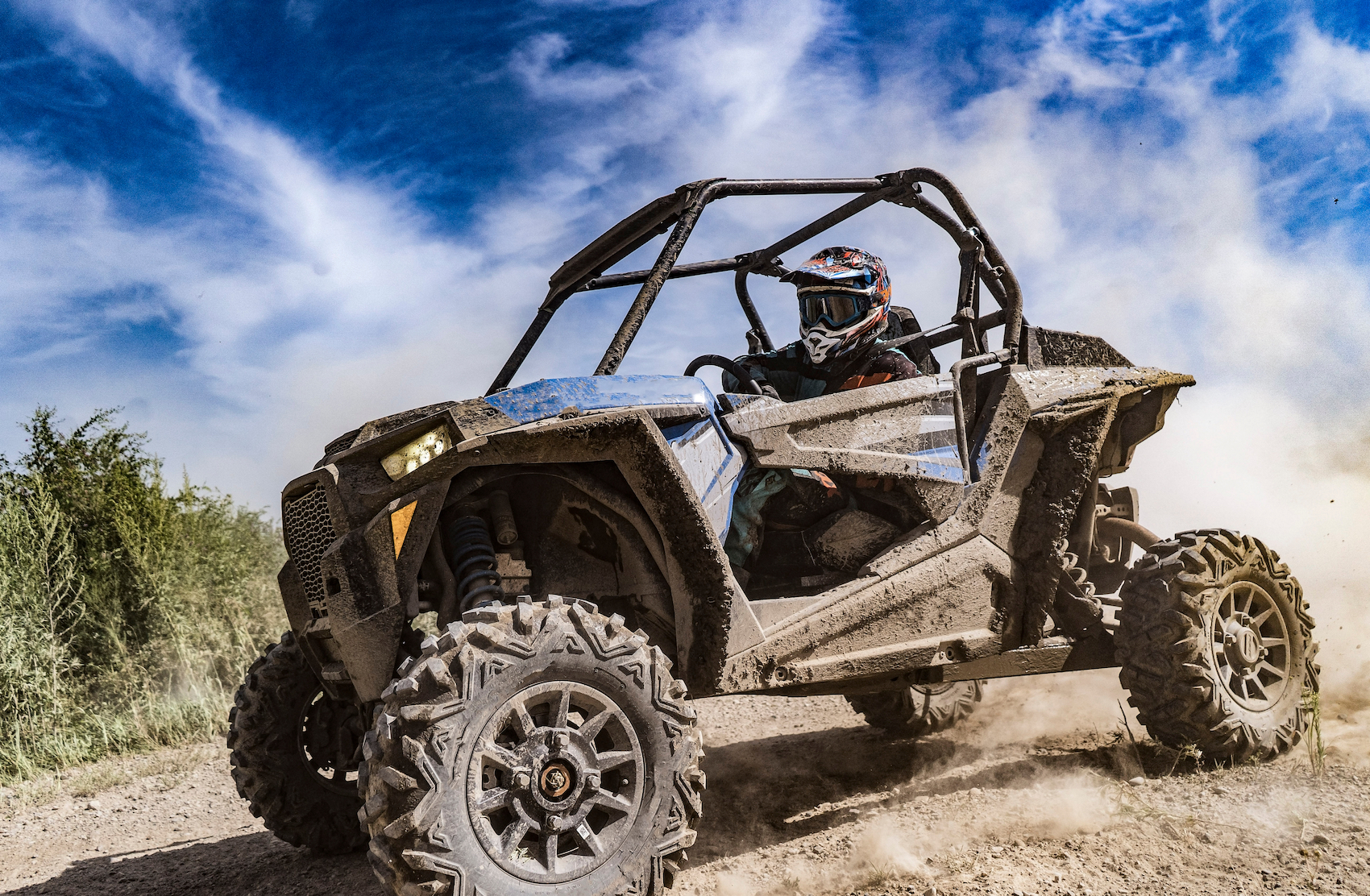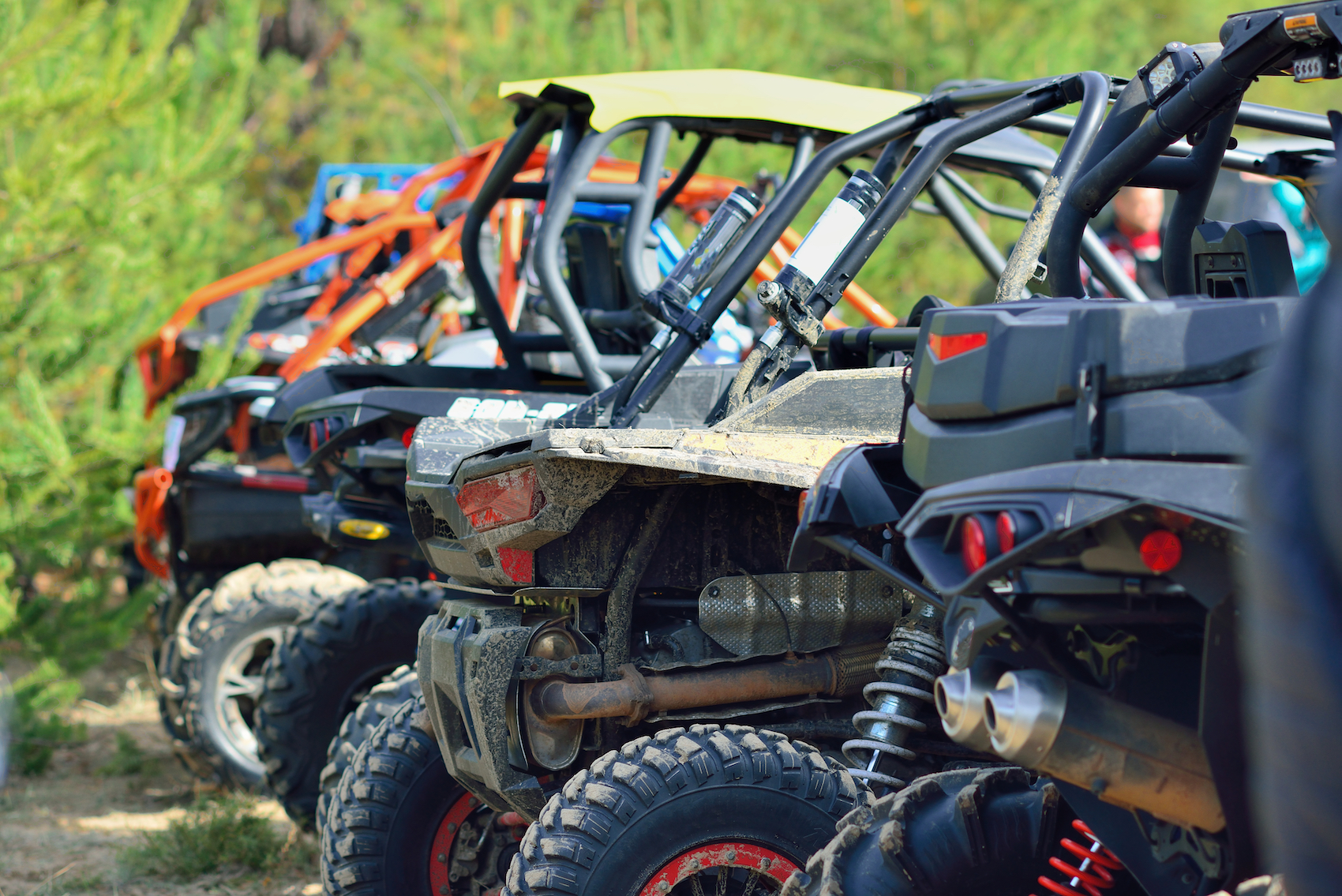UTVs vs ATVs: Which Is Right for You?
Posted by ZM Performance on Jul 14th 2021

Why Buy an ATV or UTV?
Whether the day calls for hauling materials or just howling with laughter, off-road vehicles deliver! Since the first off-road vehicle, or ORV, was developed in the early 1900s, manufacturers have made tremendous advancements in speed, safety, comfort, and functionality. Today, two of the most commonly purchased off-road vehicles are ATVs and UTVs. Packing a whole lotta punch in little gloves, each vehicle provides a combination of fun and efficiency that’s unmatched by their bigger, more cumbersome off-road counterparts. UTVs and ATVs are becoming an essential piece of every family’s toy collection. Read on to figure out which one is right for you!
What Is an ATV?
If the only TV you have is in the living room, it’s alright; it won’t be that way for long! The acronym ATV stands for ‘all-terrain vehicle.’ The ATV, also commonly known as the “four-wheeler,” was originally released in 1970 as a three-wheeled, fuel-efficient motorbike in response to the gas shortage in WWII. Ranchers and farmers were the first in line to purchase these gas-efficient utility machines, but by 1980, children of all ages were straddling the seats, wrenching back on the handlebars, and flying through the fields. In 1982 the fourth and final wheel was added to create what we now know as the “quad.”
Due to their increased popularity amongst recreational riders, ATV manufacturers have successfully incorporated fashionable customs with a bit more grit. Custom fenders for models like the Honda TRX250R, the Suzuki LT80, and the Polaris Predator 500 come with a high gloss finish that is UV-stabilized, resistant to chemicals, and tougher than the original OEM parts. ATVs provide riders with straddle-style seating and handlebar steering, making them a little more physically demanding to operate than other vehicles.
Although most ATVs are meant for single riders, some models come with extended seats that offer a little more comfort. ATVs are smaller, faster, and more agile than their big little brother, the UTV. An ATV can be anywhere from 70 to 94 inches in length and 42 to 48 inches in width. Weighing considerably less than some motorcycles, sport model ATVs can weigh as little as 350 pounds and go up to 55 mph. The beefier utility models can weigh up to 700 pounds topping out at 80 mph. With their smaller stature, ATVs are better for narrow trails with the need for tight turns and quick maneuvers.
What Is a UTV?
Originally released in 1988, the UTV, or utility task vehicle, made its debut as a new take on the ATV and its capabilities. Their popularity has skyrocketed over the last few years. The UTV market in the US surpassed 7 billion dollars in 2020 and is expected to grow by almost 10% in less than a decade. More commonly referred to as a “side by side,” or SXS for short due to their modified seating as passengers sit “side-by-side” rather than “back-to-front.”
Mismatching the harsh environments they play in, the UTV offers bucket seats, a steering wheel, windshield, and foot pedals; giving passengers just as much comfort as they have freedom. One of the UTVs’ most identifiable features is its stock roll cage. Aftermarket roll cages are available for racers and those who intend on rolling their UTVs, but for the common consumer, the stock cage should withstand normal wear and tear.
UTVs are much more popular amongst farmers and ranchers since they are sturdier than ATVs, carry more weight and allow similar offroad freedoms. The average UTV length measures anywhere from 110 to 150 inches or more depending on rear modifications. UTVs generally weigh upwards of 1400 lbs with a typical towing capacity of 1,000 lbs; some even pulling close to 2,500 lbs. There are multiple manufacturers of UTVs offering their own customizable options. Depending on the make and model, some of the following additional modifications can be added to create the perfect machine: front loaders, sprayers, winches, dump bins, and more.

General ATV/UTV Maintenance
Similar to any other vehicle, UTVs and ATVs thrive with scheduled maintenance. The use will dictate service but off-road vehicle (ORV) owners should always follow the recommendations made by the manufacturer. Most ATVs and UTVs incur short bursts of intense power followed by stents of dust collections. This calls for meticulous care with every use. ORVs usually run at high temperatures with high RPMs, so engine oil specifically for UTV/ATV engines has additives to dissipate heat and maintain a wider range of viscosity and stability over a longer period of time than automobile oil. Synthetic oil is more popular than conventional or semi-synthetic in ORVs because of its resiliency in these types of conditions. Common oil changes are done about every 6 months, 100 driving hours, or 1,000 miles. Oil filters should be replaced with every oil change as well as air filters. Air filters increase horsepower, improve engine performance, and decrease strain. If the ATV or UTV is being ridden in dry, dusty or sandy areas it’s recommended to change them every 50 miles, sometimes even earlier. Again, ORV owners should always refer back to the owner’s manual for the most accurate source of information.
Ready to Ride Your New ATV/UTV?
Now that the scheduled maintenance is covered, it’s time to play, or get to work! Before every ride, ATV and UTV owners should follow these simple guidelines:
- Check engine oil levels: If the engine oil level is consistently dropping it may be an indication that there is a leak. Rising oil, on the other hand, is no better. This can come from a build-up of contaminants in the crankcase. Both of these signs call for prompt investigation and mitigation.
- Check transmission fluid levels: The transmission fluid level is not as detrimental as oil but it’s there for a reason and should be checked before each ride. When doing this, the rider should be checking for the color and clarity of the liquid. The fluid should be clear and free from debris. If it is not, it should be changed. Average maintenance is every 100 hours, 12 months or 1,000 miles.
- Check antifreeze/coolant cap and fluid levels: It is important to only check this when the engine is cool. Antifreeze/coolant helps cool the engine and lubricate internal components. The overflow reservoir should not be completely empty; if so, check for leaks. A common culprit for leaking fluid is a damaged reservoir cap. A faulty cap also messes with pressurization inside the engine, so it’s best to take care of this as soon as possible.
Which Is Better for Me: UTV or ATV?
Before stepping foot on the sales lot, prospective customers need to make a few important decisions. Both UTV and ATV vehicles offer a mix of fun and functionality, so to make it a little easier, buyers should consider what, and who exactly, will be involved in the excursions. UTVs are more popular amongst families due to their safety features, comfort, and available storage. With a storage bin in the back and the ability to fit up to 6 passengers, UTVs make family camping trips a breeze.
If the adventures are taken solo more often than not, and there isn't much to bring, an ATV is perfect. Since ATVs have handlebars, no seatbelts and a saddle seat with no back they are more dangerous and can be more physically demanding to operate. If there is only one thrill seeker in the family, it may just be easier to purchase a small sport ATV and allow them to rip up the trails alone!
Another factor to consider when purchasing an off-road vehicle is the transportation and storage. Unless custom parts have been added, ATVs are usually no more than 50 inches wide and have no overhead pieces. This size and shape allow for easier transportation without a trailer. Depending on the model and modifications, UTVs can take up a considerable amount of space and be quite tiresome to transport. Purchasing either would require the storage area and, if necessary, the trailer to be measured beforehand.
Since they are primarily designed for heavy hauling, UTVs have bigger engines, bigger attachments and even bigger price tags. ATVs are still heavy hitters when it comes to towing capabilities but the price tag won’t be a total knockout. Some UTVs are being sold for the same price as a new sedan, but depending on the demand and commitment to maintenance, these vehicles will earn their place on any property.

Who Wins: ATV vs UTV?
Whether it’s a new toy or a new tool, both the ATV and the UTV are great additions to any home. ATVs are smaller, faster, less expensive and great for single riders. UTVs are a little bigger and a little more expensive, but they are better options for larger families and larger loads. Here at ZM Performance, we offer a wide variety of expertly made accessories for both ATVs and UTVs. If you have any questions don’t hesitate to call our team at 800 967 8801!
